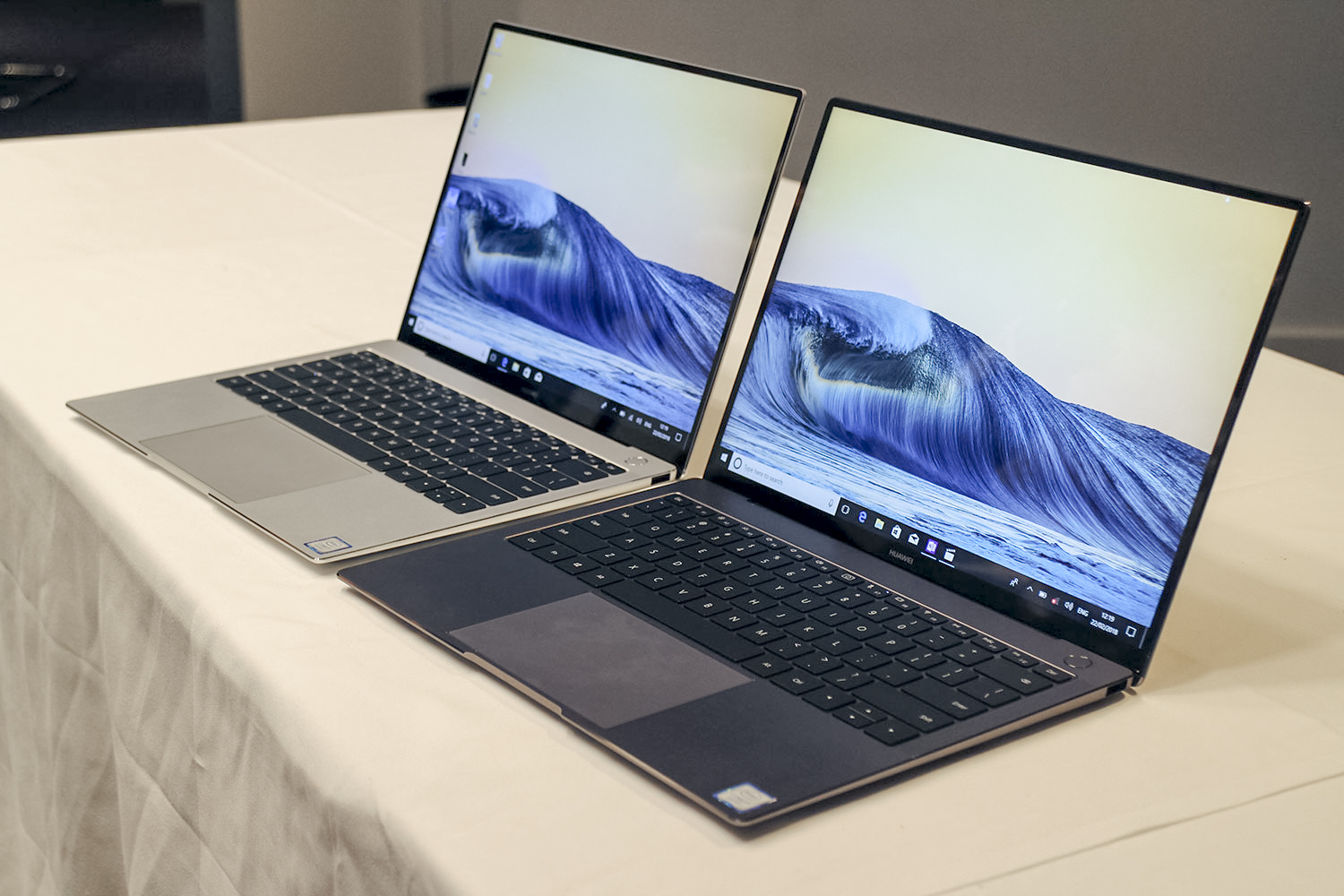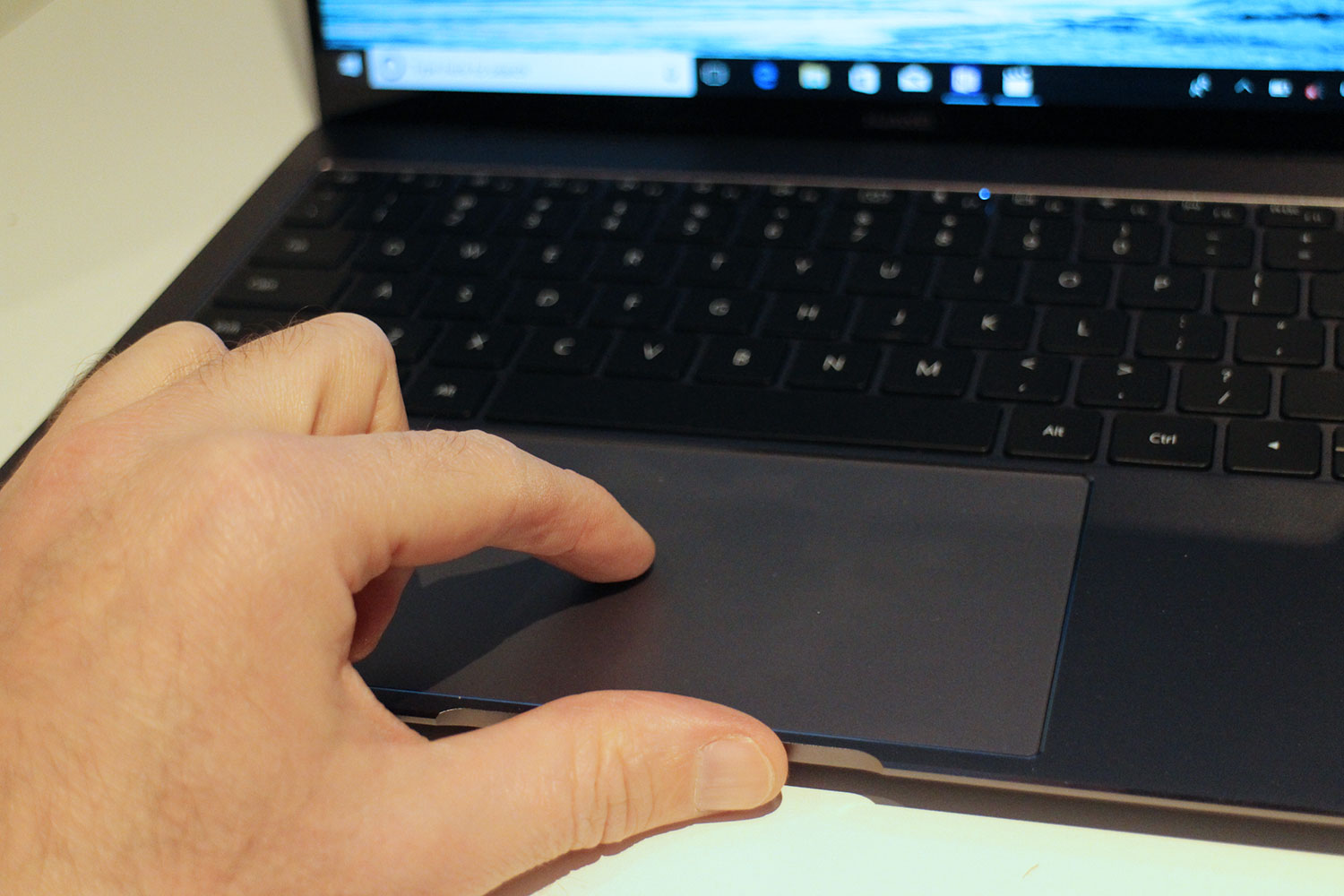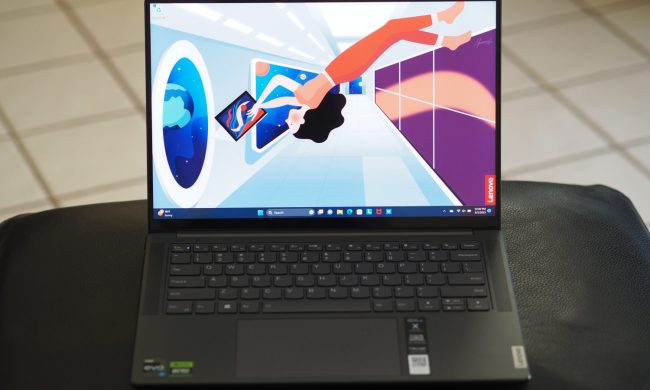At MWC (Mobile World Congress), Chinese manufacturer Huawei showed off its new laptop, the MateBook X Pro. And now, the laptop has been made available in the U.S. The base model will set you back $1,200, while the more powerful version is $300 more expensive.
The design is stunning, but it’s not a revolutionary. Instead, it’s the fulfillment of a lot of the promises that laptop makers have been building toward for years. In particular, we noticed two trends from other manufacturers that the MateBook X Pro has borrowed, and taken a step further.
Trend #1: The Dell XPS 13’s bezels
The most striking feature of the MateBook X Pro is the bezel — or lack thereof. When the Dell XPS 13 first came out in 2015, we couldn’t have known how big an influence it would have on the future of laptop design. Its shrunken bezels made just about every other laptop on the market feel outdated — in the same way that the Galaxy S8 did with smartphones years later.
The MateBook X Pro has taken that trend and played it out to its final form, giving us a laptop display that feels nearly edge-to-edge. The bezels around the edges are only 4.4mm on each side, the same as the new Dell XPS 13’s bezels. The difference is that Huawei has also cut the bottom bezels, moving the webcam off the lid entirely and giving the display a 91-percent screen-to-footprint ratio. The size of the bezels are almost Apple-like in their stubborn symmetry — and this time, not even a notch was necessary.
Not only do those severed bezels make for an awesome viewing experience, they also make room for more pixels. Huawei smartly went with a 3:2 aspect ratio, providing a 3,000 x 2,000 resolution display that feels right on a laptop. Rather than fitting the same-sized screen into a smaller footprint, Huawei went for a larger display into the same overall dimensions. It’s exactly what we wished Dell would have done on the newest XPS 13.
Trend #2: Functional minimalism
No one’s going to deny that the MateBook X Pro looks eerily similar to the MacBook Pro. It has a metal unibody chassis, a very familiar paint job, and even the exact same placement of its speaker grilles. But copying Apple is not anything new. What Huawei has done differently is borrow the best parts of the MacBook Pro — and diverge in its own interesting way.
While the MateBook X Pro looks like no more than a logo-swap on the back of the lid, inside there’s more going on. Unlike the MacBook Pro, it has a wedge shape, and the edges are slightly more rounded and smooth. That makes it feel smaller and more svelte than the blocky Pro.
The laptop also takes the MacBook Pro’s massive touchpad and plants it on a Windows 10 laptop. There’s more to it than just looks obviously, but clearly it’s something Huawei borrowed from Apple’s playbook. This makes a lot of sense. Microsoft has improved Windows touch gesture support greatly with Windows 10, and it’s now just as useful as MacOS — when paired with a good touchpad.
While the MateBook X Pro takes inspiration from Apple, it’s smart enough to reject what hasn’t worked. Huawei offers a full USB-A port, along with USB-C, and doesn’t waste time or money on a Touch Bar.
Trend #3: Graphics
Support for discrete graphics doesn’t really play into laptop design — or does it? After all, laptops with discrete graphics cards have come in two variants in the past – large 15-inch laptops, or chunky gaming machines. Neither are conducive for taking your work or play on the go.
This year, though, we’ve seen laptops like the Asus ZenBook 13 UX331UN, which sports the Nvidia MX150 in a super-thin package that you’d never guess could play games at decent framerates. It takes a tremendous amount of design and engineering to fit those kinds of components in a laptop this thin, especially when it comes to keeping it cool. The trend has continued with the MateBook X Pro, which includes the MX150.
Although it doesn’t come in the base model as it does with the ZenBook, Huawei has taken gaming on its laptop a step further by offering support for external GPUs. The inclusion of a Thunderbolt 3 port makes it possible, though many manufacturers block the ability to power up something like an Nvidia GeForce GTX 1080.
Taking the best from Dell and Apple, the MateBook X Pro has taken the promise of thin bezels, unibody design, and powerful graphics to its fullest potential.
The $1,200 model boasts an eighth generation Intel Core i5-8250U processor with integrated graphics, 8GB of RAM, and a 256GB NVMe PCIe SSD. The $1,500 laptop has an eighth generation Intel Core i7-8550U processor, 16 GB of RAM, and 512GB of storage, as well as NVIDIA GeForce MX150 graphics.
You can buy the Matebook X Pro beginning today from Amazon, Newegg, and Microsoft’s website, or in Microsoft Stores if you’re willing to wait a couple more days to May 23. Plus, Huawei is offering a $300 gift card to any store you’d like if you buy the laptop from Amazon or Newegg, or in a physical Microsoft Store.
Updated on May 21: The MateBook X Pro is now available in the U.S. beginning at $1,200.





